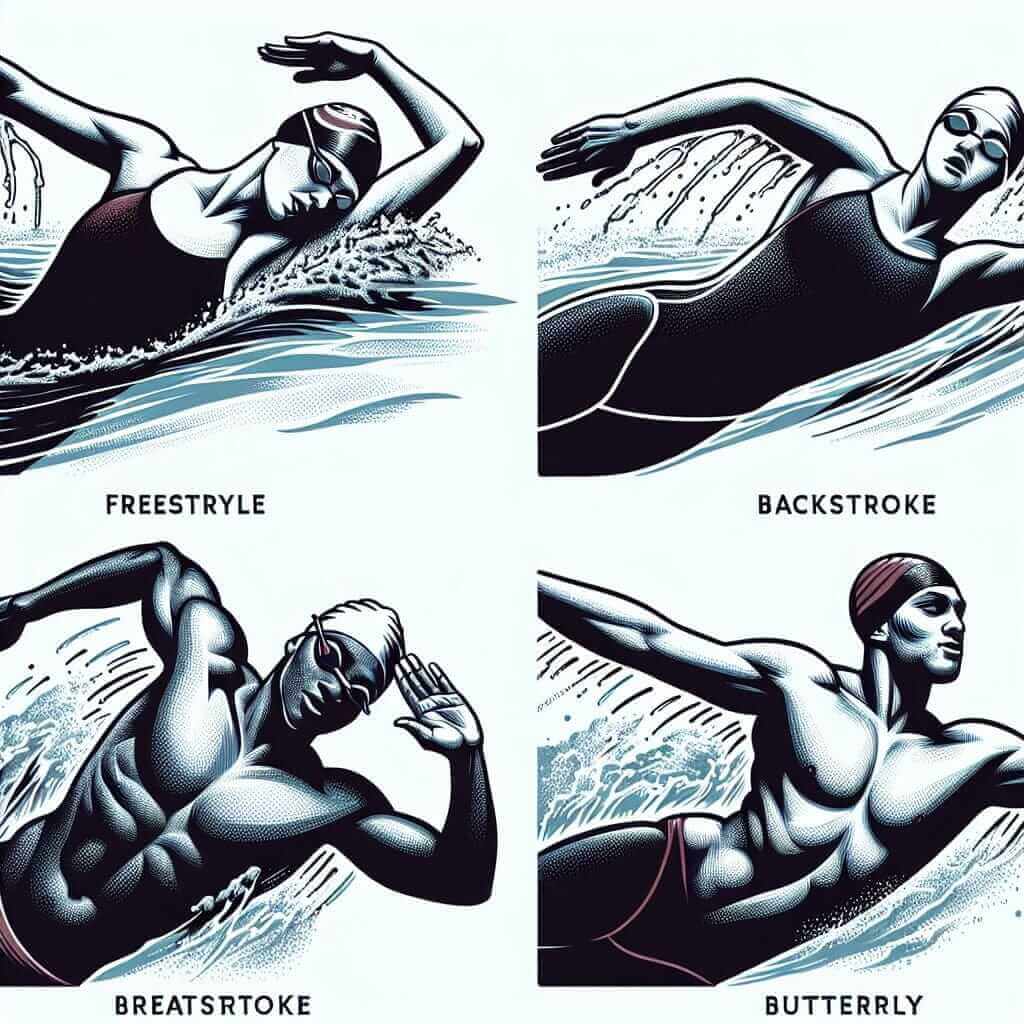As an IELTS teacher with over 20 years of experience, I often find students struggling to describe actions or processes, and swimming techniques are no exception. Mastering this skill is not just about showcasing your vocabulary; it’s about demonstrating your ability to articulate complex movements effectively, a valuable asset for your IELTS Speaking and Writing exams.
Why Describing Swimming Techniques Matters for IELTS
Imagine yourself in the IELTS Speaking test. The examiner asks: “Can you describe how to do a particular swimming stroke?” Or, in the Writing test, you need to detail a childhood memory of learning to swim. These scenarios demand precise language and an understanding of movement verbs and adverbs.
Describing swimming techniques allows you to:
- Demonstrate Vocabulary Range: Using precise verbs like “propel,” “glide,” “flutter,” and “rotate” instead of generic terms like “move” or “go” can significantly boost your Lexical Resource score.
- Showcase Grammatical Range: You can utilize various grammatical structures, including present continuous for ongoing actions (e.g., “The swimmer is extending his arm”), present perfect continuous for duration (e.g., “She has been practicing her butterfly kick”), and adverbs to describe manner (e.g., “He kicks powerfully”).
- Illustrate Clarity and Coherence: A well-structured description demonstrates your ability to present information logically, enhancing your overall coherence.
Mastering the Language of Swimming
Let’s break down the description of some common swimming strokes:
1. Freestyle (Front Crawl)
- Body Position: The swimmer lies horizontally, face down in the water.
- Arm Movement: The arms alternate in a circular motion, one arm pulling and pushing water while the other recovers above the water.
- Leg Action: The legs perform a flutter kick, alternating up and down movements from the hips.
- Breathing: The swimmer rotates the head to the side to breathe, timing the breath with the arm stroke.
Example: “In freestyle, the swimmer maintains a horizontal position, propelling themselves forward with alternating arm strokes. The legs execute a continuous flutter kick, and the swimmer breathes by rotating their head to the side in sync with the arm movements.”
2. Backstroke
- Body Position: The swimmer lies on their back, face up.
- Arm Movement: Similar to freestyle, but the arms move in a reverse circular motion, pulling water down towards the feet.
- Leg Action: Flutter kick, similar to freestyle.
- Breathing: The swimmer’s face remains above water, allowing for continuous breathing.
Example: “Backstroke involves lying on one’s back and employing alternating arm movements that propel the body upwards. The legs engage in a flutter kick, and breathing is uninterrupted as the face stays above the surface.”
3. Breaststroke
- Body Position: The swimmer lies face down, but with a more undulating, wave-like motion.
- Arm Movement: Both arms move simultaneously in a heart-shaped pattern, pushing water back to propel the swimmer forward.
- Leg Action: A simultaneous frog kick, bringing the legs together in a powerful thrust.
- Breathing: The swimmer lifts their head forward to breathe during the arm recovery phase.
Example: “Breaststroke distinguishes itself with a distinctive frog kick and a simultaneous arm movement that resembles a heart shape. The swimmer’s body undulates, and they breathe by lifting their head forward.”
4. Butterfly
- Body Position: The swimmer lies face down, with both arms moving simultaneously.
- Arm Movement: Both arms move together in a large, overwater recovery, entering the water together to propel the body forward.
- Leg Action: A dolphin kick, where the legs move together in a powerful up-and-down motion.
- Breathing: The swimmer lifts their head forward to breathe as the arms recover over the water.
Example: “Butterfly is a demanding stroke characterized by a simultaneous arm recovery and a powerful dolphin kick. The swimmer’s upper body rises out of the water with each stroke, and they take a breath during this upward motion.”

IELTS Practice Makes Perfect
Here’s how you can apply these descriptions to potential IELTS tasks:
- Speaking Part 2: If you’re asked to describe a sport or a skill you’ve learned, swimming and specific strokes could be great options. Use the vocabulary and structures above to deliver a detailed and impressive response.
- Speaking Part 3: You might encounter questions about the benefits of swimming or the challenges of learning a new stroke. Here, you can discuss aspects like muscle engagement, cardiovascular fitness, or the coordination required.
- Writing Task 1 (Process): While less likely, you might need to describe the process of a swimming stroke. In this case, a clear, step-by-step explanation with appropriate sequencing words (first, then, next, finally) is crucial.
Final Tips
- Practice makes perfect! Regularly describe different swimming techniques aloud or in writing to solidify your vocabulary and grammar.
- Watch videos: Pay close attention to the movements and try to use specific vocabulary to describe what you see.
- Don’t be afraid to be creative: While accuracy is key, you can also use metaphors or similes to make your descriptions more vivid.
By mastering the language of movement and applying these tips, you’ll be well-equipped to confidently tackle any swimming-related topic in your IELTS exam. Good luck, and happy swimming!